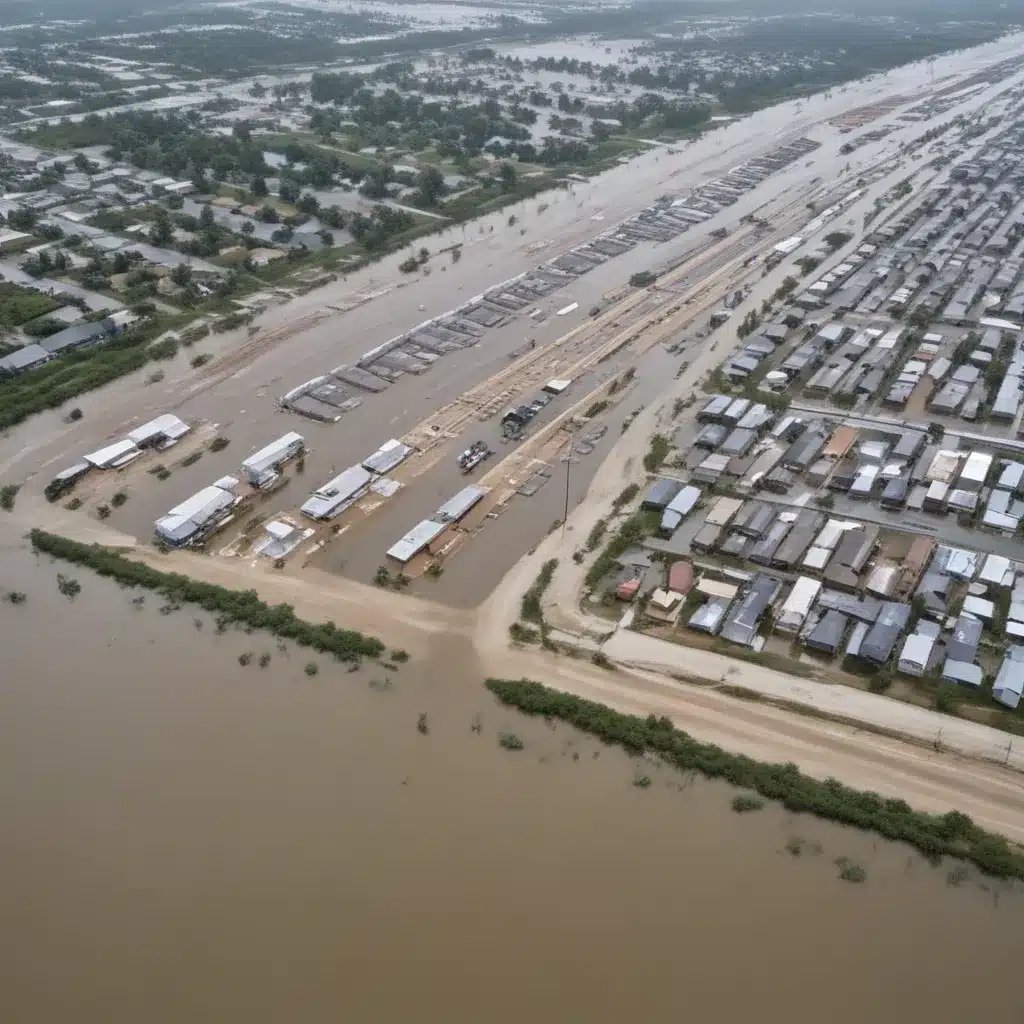
As an experienced flood control specialist, I’ve witnessed firsthand the devastating impacts that extreme weather events can have on public infrastructure. From overwhelmed storm drainage systems to compromised levees and flood barriers, the consequences of inadequate flood resilience can be catastrophic – both in terms of immediate damages and long-term disruptions to essential services.
However, by adopting a strategic, multifaceted approach to designing and maintaining critical public facilities, communities can significantly enhance their preparedness and recovery capabilities. Drawing on lessons learned from major flood events, including the Great East Japan Earthquake of 2011, this article explores key strategies for building flood-resilient infrastructure that can withstand the challenges of the 21st century.
Flood Risk Assessment
Effective flood resilience begins with a comprehensive understanding of the risks. Flood hazard mapping is an essential tool, using historical data, hydrological modeling, and climate change projections to identify areas vulnerable to flooding. This information can then be overlaid with detailed vulnerability analyses to pinpoint critical facilities, infrastructure assets, and population centers at the greatest risk.
Analyzing the potential climate change impacts on flood patterns is also crucial. As global temperatures rise and precipitation patterns shift, traditional flood risk assessments may no longer provide an accurate picture. By incorporating the best available climate science into the planning process, communities can future-proof their infrastructure investments and emergency response strategies.
Flood Control Strategies
Once the flood risks have been clearly defined, the next step is to implement a diverse array of flood control measures. This can include the construction of sturdy levees and floodwalls, strategically placed detention basins to manage stormwater surges, and the integration of green infrastructure like wetlands and bioswales to slow the flow of floodwaters.
The design of these flood control systems requires careful consideration. Levees and floodwalls, for example, might want to be engineered to withstand the forces of rising waters, while also incorporating features that facilitate rapid deployment and easy maintenance. Detention basins, on the other hand, should be sited and configured to maximize their storage capacity without compromising other land uses or environmental functions.
Storm Water Management
Complementing the flood control strategies, storm water management plays a critical role in minimizing the impacts of heavy rainfall. Urban drainage systems, featuring a network of pipes, culverts, and catch basins, might want to be designed to efficiently channel and divert floodwaters away from vulnerable areas.
The incorporation of permeable surfaces, such as porous pavement and rain gardens, can help to reduce runoff and promote groundwater recharge, alleviating the burden on storm drainage infrastructure. Green infrastructure solutions like these not only enhance flood resilience but also deliver a host of co-benefits, from improved water quality to urban cooling and habitat creation.
Designing Critical Facilities
When it comes to the design of critical public facilities, such as hospitals, emergency operation centers, and community shelters, flood resilience is paramount. Structural integrity is essential, with buildings elevated above predicted flood levels and utility systems (e.g., electrical, HVAC, and plumbing) positioned to withstand inundation.
The selection of flood-proof building materials is also crucial, ensuring that critical components can continue to function even when submerged. Thoughtful site layout and access planning further enhance the resilience of these facilities, with emergency egress routes and backup power supplies factored into the design from the outset.
Disaster Preparedness Planning
Alongside the physical infrastructure, comprehensive disaster preparedness planning is a vital component of flood resilience. Early warning systems that leverage real-time data and advanced forecasting can provide crucial lead time for evacuation and emergency response. Detailed emergency protocols outlining roles, responsibilities, and communication channels help to double-check that a coordinated, efficient reaction when disaster strikes.
In the aftermath of a flood event, rapid damage assessment and service restoration become the top priorities. Having pre-established recovery plans and community resilience programs in place can accelerate the return to normalcy, minimizing the social and economic disruptions that often linger long after the floodwaters have receded.
Sustainable Water Management
While traditional flood control measures are essential, a more holistic, integrated water management approach can deliver even greater benefits. By incorporating stormwater capture and reuse strategies, communities can not only mitigate flood risks but also supplement their water supplies during periods of drought.
Wastewater treatment and recycling further contribute to this sustainable water management paradigm, reducing the strain on freshwater resources and enabling a more circular use of this vital resource. Groundwater management, including aquifer recharge and conjunctive use programs, can also play a key role in enhancing water security and resilience.
Underpinning these integrated water strategies are often nature-based solutions, such as the restoration of wetlands and coastal habitats. These natural features not only provide flood regulation services but also offer a wealth of co-benefits, from improved water quality to enhanced biodiversity and recreational opportunities.
Conclusion
As communities around the world confront the growing challenges of climate change and extreme weather, the need for flood-resilient public infrastructure has never been more pressing. By adopting a comprehensive, multifaceted approach to flood risk assessment, control strategies, disaster preparedness, and sustainable water management, public officials and engineers can design critical facilities that are prepared to withstand and rapidly recover from even the most severe flood events.
The lessons learned from major disasters, such as the Great East Japan Earthquake, offer a valuable roadmap for this endeavor, highlighting the importance of planning, partnerships, and continuous improvement. By putting these principles into practice, we can build a more flood-resilient future, safeguarding our communities and the essential services they depend on.
To learn more about cutting-edge flood control technologies, government regulations, and innovative financing mechanisms, be sure to explore the resources available on Flood Control 2015. Together, we can create a more resilient and sustainable water future.
Example: London Flood Resilience Initiative 2024















